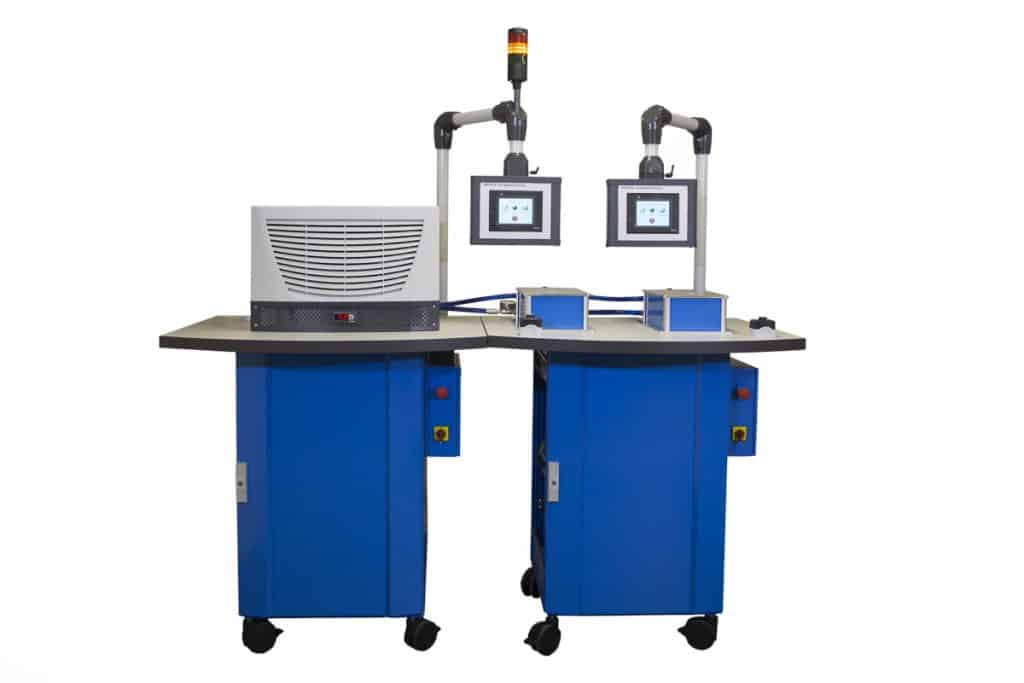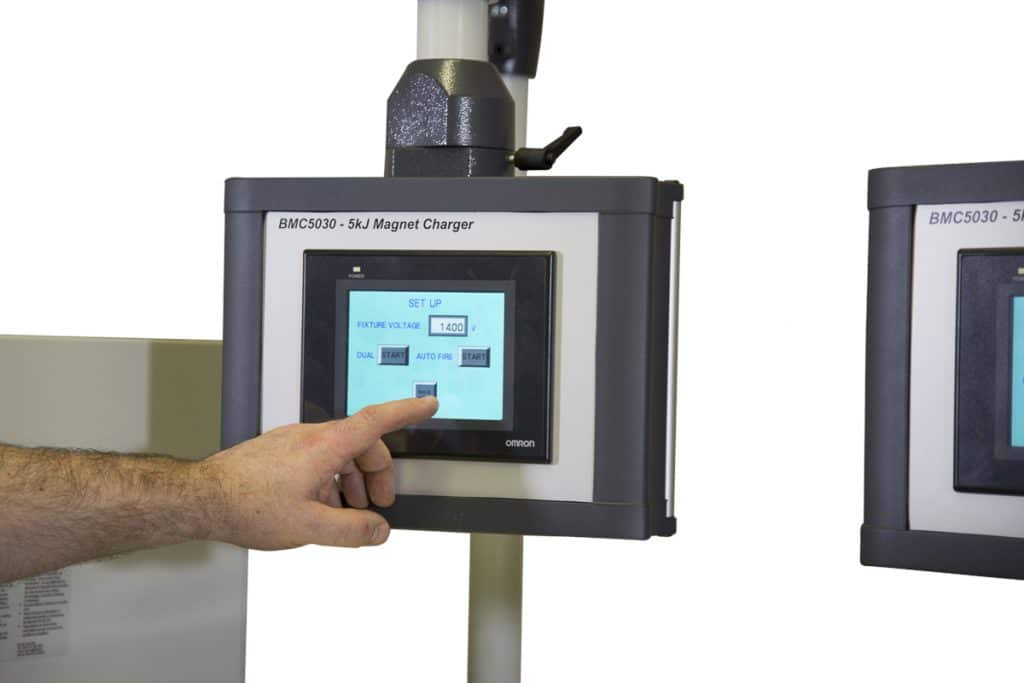Bespoke Magnetiser for Electronics Application
By Paul Fears | 06 November 2018
High strength magnets (e.g. Neodymium Rare Earth) are a vital part in many everyday electric appliances. Charging those small magnets for use in electronics applications often requires a high degree of accuracy. One typical example is where the magnet interacts with a sensor to confirm that a component is correctly in place. Subsequently, Bunting designed and built a bespoke magnetiser specifically for this .

At their European headquarters in Berkhamsted, United Kingdom, Bunting’s engineering team design bespoke magnetisers for use in the electronics and commercial appliance markets.
- Technical Product Information: Industrial and Small-Scale Magnetisers
The Bespoke Magnetiser Design Project
In a recent project, the Bunting design team were faced with a challenging application. In the electric appliance, the small magnet talks to a sensor to confirm when a key part is correctly positioned. Normally permanent magnets are supplied magnetised, but this was not possible because:
- The small size;
- Demagnetisation due to heat during the plastic over-moulding process;
Subsequently, the magnet part would initially be assembled and over-moulded prior to magnetisation.
Operating Criteria
As in many electronics applications, the numbers of magnetic parts needing to be magnetised were substantial. The specification stipulated that one part would be magnetised every three (3) seconds. The production process would run for 24 hours, 6 days a week. Even with the intense workload, the magnetiser was expected to have a minimum of a 5-year life.
The Magnetiser Design
The normal magnetising firing frequency is every four (4) seconds. To fire every three (3) seconds, the Bunting design team introduced two base units. These operated in parallel, magnetising two fixtures every six (6) seconds. This equates to the magnetiser firing 4,320,000 every year.

The design team developed the hardware and software to enable the two base units to talk to each other. This ensured that magnetisation occurred at exactly the same time.
Initial design calculations indicated that the act of magnetisation could generate 8kj of heat 6 seconds. With the aim of using the least energy possible, the fixture was designed to run at 1400V instead of the maximum 3000V. This used less than 4kj per firing. The reduced energy loading meant that the components within the charger were only at 50% stress, extending their expected life.
Additionally, each time a magnetic component is charged, the magnetising coil has to dissipate that 4kj of heat. To keep the coil operating at an optimum level, a closed loop chiller is used. This keeps the coils at below 75 degrees centigrade, extracting 1 kW of energy across the two fixtures.
Related Technical Article
Magnetiser Designs
This is one of many projects where the Bunting engineering team has designed a bespoke magnetiser. Whereas this project was a manual operation, other magnetisers are integrated into automated systems. Additionally, for overseas operations remote access can be provided via ethernet connections.
Bunting specialises in providing magnetic solutions. They also sell a wide range of magnets and magnetic components online via their Bunting-eMagnets brand.
For further information on bespoke magnetiser designs and magnetic assemblies, please contact us:
Phone: +44 (0) 1442 875081
Email: sales.berkhamsted@buntingmagnetics.com
Via the Bunting Europe website for specialist magnets and magnetic assemblies
Via eMagnets for online purchase of Magnets and Magnetic Technology



